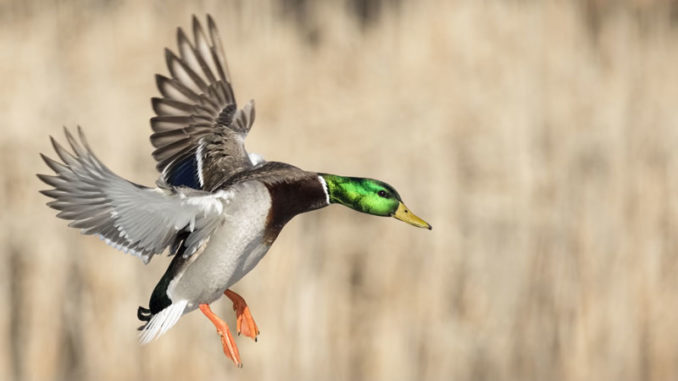
Mild weather contributed greatly to poor duck season in Louisiana
By their nature, Louisiana duck hunters have to be optimists. Every summer, they wait for the news of North America’s wetland habit and waterfowl breeding surveys. This year’s survey, while not stellar, showed that North America’s waterfowl populations remain above the long-term averages.
Hunter anxiety begins to build all the way to Opening Day, betting that the birds will finally show up. Unfortunately, the 2019-2020 season is in the books, and it won’t go down as a memorable one. Larry Reynolds, waterfowl program manager for the Louisiana Department of Wildlife and Fisheries, summed it up this way: “It was better than last year, but still it was still way below average.”
As far as birds making it to Louisiana, the waterfowl survey done in November was the third worst on record. Fortunately, hunter success picked up a tick in December as duck numbers increased in the Bayou State. However, the December counts remained below average. January’s surveys are still being calculated, but preliminary numbers show duck populations already beginning to decline.
“Based on the bag-check data on the southeast state WMAs, coastal Louisiana has done the poorest this year,” Reynolds said. “Some areas of north Louisiana have had better results, actually killing more ducks in November than all of last season.”
Mother Nature
The unusual weather patterns have not been kind to Louisiana hunters. The fall started strong with a northern blizzard in October. Then Mother Nature followed up with a mild November. A few decent fronts finally arrived in December, and the waterfowl surveys showed improvement. Unfortunately, January only provided warm and stale weather.
“Migration across the Mississippi Flyway, Illinois, Missouri, Arkansas, and Mississippi have been below average”, Reynolds said.
The lack of duck migration was borne out in the field. Ryan Lambert of Cajun Fishing Adventures, who hunts the Venice and Buras areas, will only harvest about 85% of the ducks — 2,500 to 2,700 — taken last year which was a down year. Historically, his operation, which hunts every day possible, has done better than 5,000 per season.
“The river’s only 2 1/2 foot under flood stage, so there’s water everywhere,” Lambert said. “The whole Mississippi Valley is underwater, which means the birds have chance to disperse.”
Pressure
With plenty of water and food to the north, Louisiana isn’t building solid concentrations of ducks. Those that do make it, particularly in southeast Louisiana, are subject to immense hunting pressure.

Lambert witnesses the pressure first hand.
“On opening day, it must have been 400 to 600 boats of hunters hitting public lands. When that happens, the birds go sit offshore in the Gulf or out in Breton Sound.”
Once our birds are run off by the pressure, they don’t tend to come back until other factors — like weather or food — push them back. That competition creates a vicious cycle of pressuring a declining number of the waterfowl. Ryan suggested coordinating all hunting zones to have the same days in an effort to reduce that pressure,
“When you only have one zone open, then everybody in the U.S. is coming to hunt that zone,” he said.
Success
But there have been successful hunts.
“You have to pick your days when you have a good wind that brings water in, because historically, in the winter, the tides are falling in the morning,” Lambert said. “The east wind pushes water in our coastal marshes (and) you are going to kill ducks that day.”
Even with falling harvest numbers, it’s not a harbinger of season-length and bag-limit changes.
“Duck-hunting mortality is a very small portion of what drives duck populations,” Reynolds said. “Harvest rates for ducks are between 5 to 12% (coming from banding recovery data).”
Environmental and habit conditions are the major drives of duck population changes.
Season-length and bag-limit determinations are based on mallard duck population and mortality. In the 2019 waterfowl survey, Mallards were 19% above the long-term average. Most other waterfowl are also above long-term averages, with only a few exceptions. So duck hunters know what that means: time to start prepping for next Season.
Shoot’m up.
